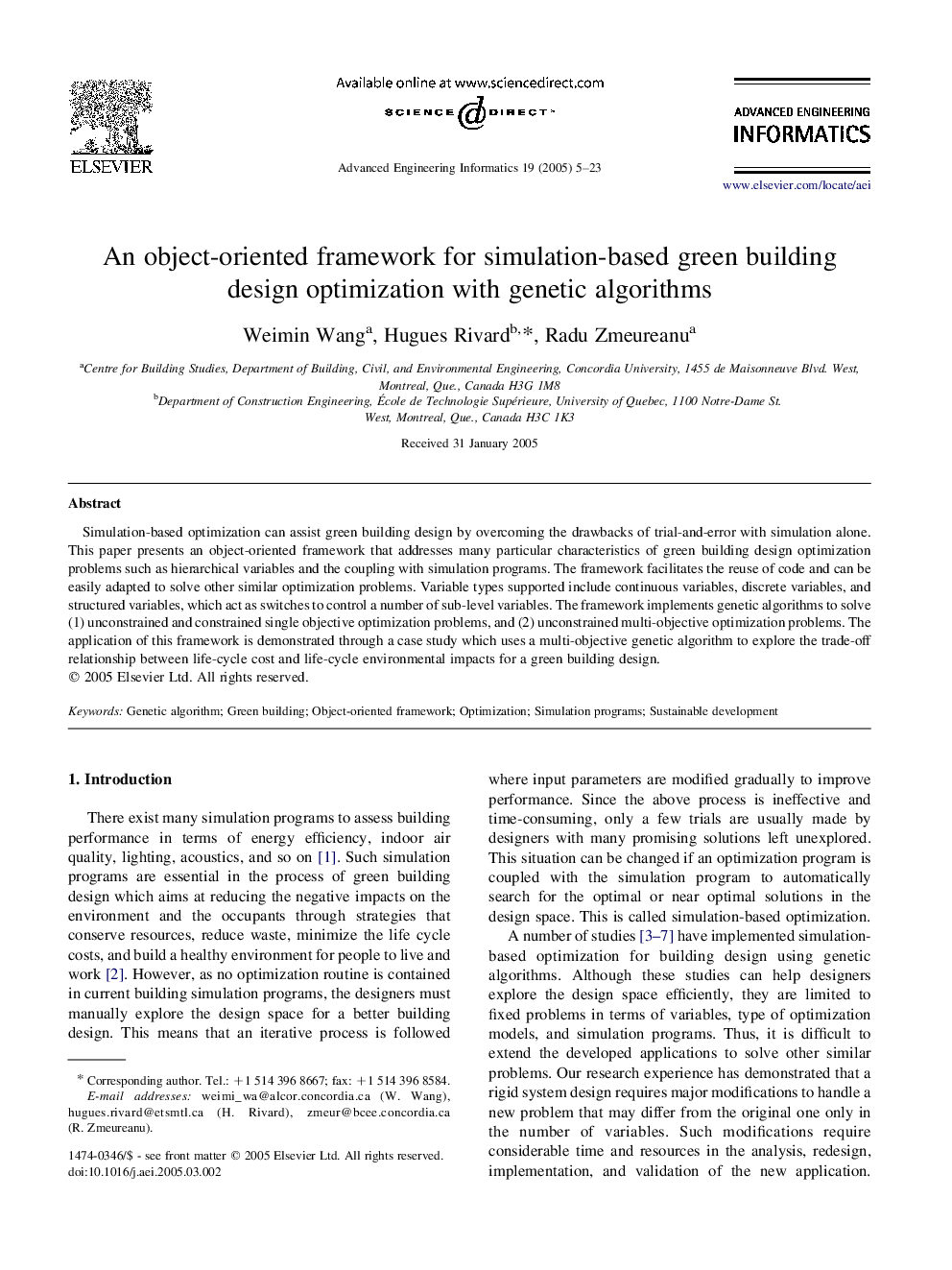| Article ID | Journal | Published Year | Pages | File Type |
|---|---|---|---|---|
| 10281791 | Advanced Engineering Informatics | 2005 | 19 Pages |
Abstract
Simulation-based optimization can assist green building design by overcoming the drawbacks of trial-and-error with simulation alone. This paper presents an object-oriented framework that addresses many particular characteristics of green building design optimization problems such as hierarchical variables and the coupling with simulation programs. The framework facilitates the reuse of code and can be easily adapted to solve other similar optimization problems. Variable types supported include continuous variables, discrete variables, and structured variables, which act as switches to control a number of sub-level variables. The framework implements genetic algorithms to solve (1) unconstrained and constrained single objective optimization problems, and (2) unconstrained multi-objective optimization problems. The application of this framework is demonstrated through a case study which uses a multi-objective genetic algorithm to explore the trade-off relationship between life-cycle cost and life-cycle environmental impacts for a green building design.
Keywords
Related Topics
Physical Sciences and Engineering
Computer Science
Artificial Intelligence
Authors
Weimin Wang, Hugues Rivard, Radu Zmeureanu,
